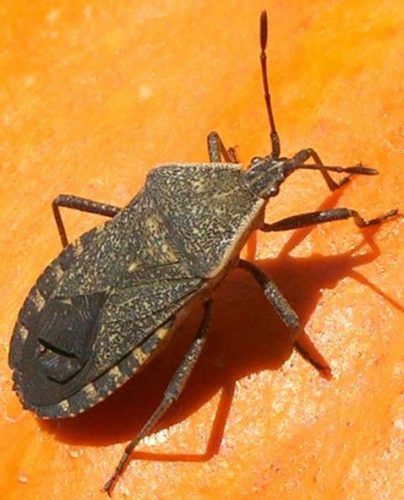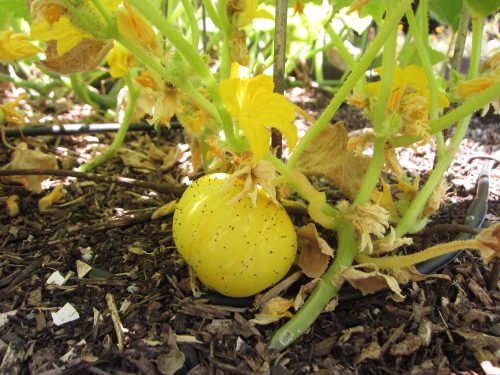A gardener wrote in recently asking if Epsom Salts are organic.
I think we should break this question down into two questions:
1) Are Epsom Salts organic?
2) Are Epsom Salts safe to use in organic gardening?
The short answer to both questions is yes, but for the sake of clarity, I’ll explain a little further.
Microsoft Encarta defines Epsom Salts as the following:
“Epsom Salts, common name for colorless or white crystalline salt (magnesium sulfate hepta-hydrate, MgSO4·7H2O) found in the minerals kieserite and epsomite and in mineral waters. Epsom salt was first prepared at Epsom, England. The salt has a bitter taste. It has been used in medicine as a cathartic, in hypertonic baths to reduce swelling, and in dyeing as a color fixative.”
The word “Organic” is used most commonly these days to define whether something can be used safely in organic gardening, or rather, is approved for use in Certified Organic farming by the OMRI (the Organic Materials Research Institute), but scientifically speaking, the word “organic” means “derived from a living organism” (I’m getting a little Star Treky here).
Since Epsom Salts are “of the earth”, meaning they are a harvested product found in well water, they is considered organic, and subsequently are considered safe for organic gardening. However, just for the record, we must remember that we are at the top of the food chain, and we have no way of controlling all of the resources we use in our gardens. For example:
There is really no such thing as certified organic fish, since fish (and fish meal or emulsion) comes from the ocean and who knows what pollutants and chemicals reside in the ocean. Salt also comes from the ocean, most of it anyway, and is susceptible to all the same elements. Manure is organic, but we have no way of knowing what those horses or cows or chickens ate to help produce that manure. I say this not to scare you, but to say that we basically have to accept that this is part of being at the top. We do the best we can.
Epsom Salts help with the uptake of magnesium, but it is a good idea to test your soil for mineral deficiencies before using Epsom Salts as a soil amendment. However, if you’ve noticed blossom end rot on your tomatoes, or under-performing roses, you can confidently throw a handful in their direction.
I hope that helps. Thanks for writing in.



Epson salt would be the wrong thing to throw on Tomatoes with blossom end rot. First, Blossom end rot is calcium deficiency most often caused by cultural practices such as uneven watering and too much nitrogen. The addition of calcium to the soil does not reverse it because it is a mechanical uptake problem. With too much nitrogen, the promotion of growth causes Calcium to go to the leaves instead of going to the fruit and that is another cause of the problem. Magnesium can compete with Calcium for uptake so Epsom salt (Magnesium Sulfate) would not be a helpful approach.
Thanks for posting, David. Most soils have plenty of calcium, but it’s bound up in the soil. The addition of magnesium sulfate helps calcium become more available to the plant. That said, I usually address the concern with compost or compost tea first, because soil microbes play a major role in making nutrients available to plant roots in the form they prefer. So I recommend soil biology tests first over chemical soil analysis to balance the Soil Food Web and get it thriving once again. Then nutrient uptake is less of an issue all around.
Can Epsom salt be used as a safe alternative to kill trees?
First I would ask why you want to kill a tree? If it’s diseased already, it should be removed and replaced with a healthy, oxygen producing tree. We’re not big fans of removing trees, as they are the lungs of the planet. If you are trying to remove a tree stump that keeps sending up water sprouts, then I have seen Epsom salts recommended to kill it off. The instructions say to drill holes in the stump and pour dry Epsom salts in the holes to fill them up. That’s the extent of my knowledge on the subject however. I am curious to know what happens once the stump is dead. Too much of anything can cause a problem to your Soil Food Web, so be careful when using anything in excess. You may not be able to grow in that spot for awhile if excessive magnesium remains.
Thanks for always being the source that explains things instead of just putting an unjustified answer out there. I loved this post.
8 Great Ways to Get Your Plants and Garden Growing using Epsom Salt
1. Lawns: Apply three pounds for every 1,250 square feet with a spreader or dilute in water and apply with a sprayer.
2. Houseplants: Use two tablespoons per gallon of water; feed plants monthly.
3. Tomatoes and Peppers: Use one tablespoon per foot of plant height per plant; apply every two weeks to keep the leaves from yellowing.
4. Roses: Use one tablespoon per foot of plant height per plant; apply every two weeks. Also scratch 1/2 cup into soil at base to encourage flowering canes and healthy new basal cane growth. Soak unplanted bushes in one cup of Epsom Salt per gallon of water to help roots recover. Add one tablespoon of Epsom Salt to each hole at planting time.
5. Shrubs (evergreens, azaleas, rhododendron): Use one tablespoon per nine square feet. Apply over root zone every 2-4 weeks.
6. Trees: Apply two tablespoons per nine square feet. Apply over the root zone 3 times annually.
7. Garden Startup: Sprinkle one cup per 100 square feet. Mix into soil before planting.
8. Flowering plants: Put one tablespoon of Epsom Salt into one gallon of water. This mixture helps to force blooms.
Epsom Salt is extremely affordable and easy to find at most grocery, hardware or drug stores. For more information on Epsom Salt and its many uses go to http://www.epsomsaltcouncil.org.